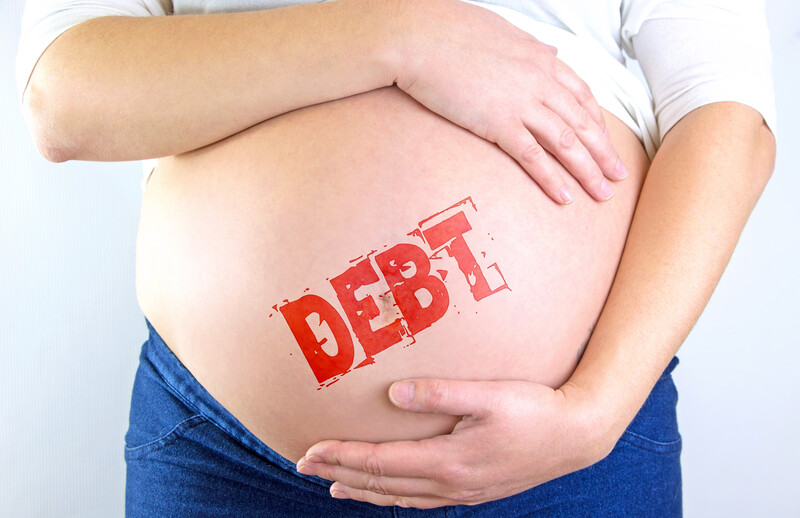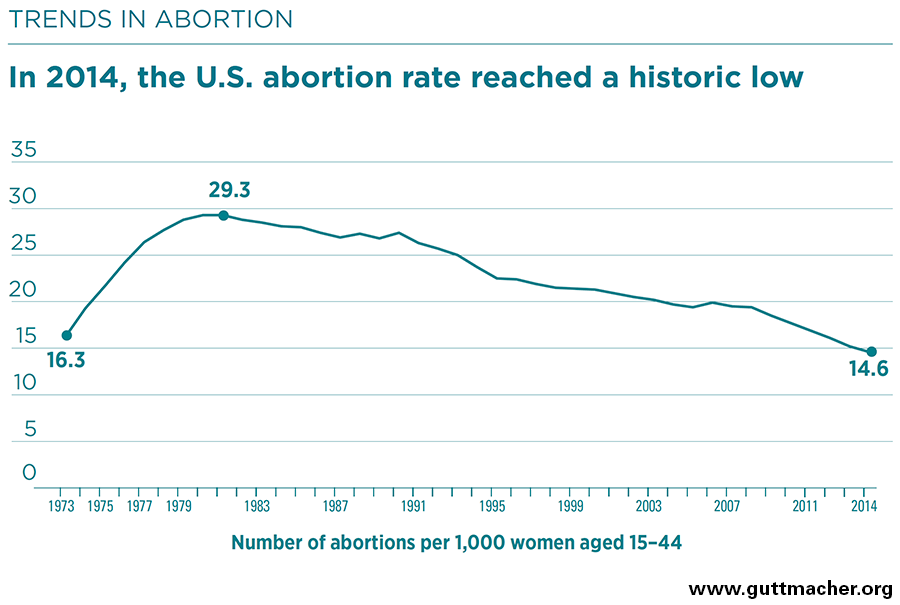Why the economy matters to the pro-life movement
 Why do women have abortions? According to the pro-abortion Guttmacher Institute: money. Let’s face it, the economy and abortion are connected.
Why do women have abortions? According to the pro-abortion Guttmacher Institute: money. Let’s face it, the economy and abortion are connected.
According to their 2004 study:
“The reasons most frequently cited were that having a child would interfere with a woman’s education, work or ability to care for dependents (74%); that she could not afford a baby now (73%).”
So when the economy goes south, financial insecurity decreases the desirability of having children, making abortion look like the best exit strategy for some women.
You can see how abortion skyrocketed during the 1970s (below), a decade of economic stagflation (economic stagnation accompanied by inflation), and how it began a steady decline when the economic policies of Ronald Reagan ushered in an era of economic prosperity.
Yesterday’s Wall Street Journal pointed out that real wages have declined under ‘Bidenomics’:
“The reason is that inflation has outpaced the earnings growth from work. Real median earnings for full-time workers last year fell $3,620 for men and $2,880 for women despite a tight labor market that had companies paying more to attract and keep workers.”
President Biden’s policies have ushered in a new era of high inflation that is devastating working class Americans’ pocketbooks.
Tipp Insights says “Bidenflation” stands at 16.7% since he took office, so our money doesn’t go as far as it used to:
“These days, it takes $1,000 in earnings to buy what $857 could purchase when Biden took office. And the earnings have not kept up with inflation.”
This isn’t a subject a pro-life group like Pulse Life Advocates typically writes about. But when Big Abortion’s very own research acknowledges that money concerns are the major reason why women abort, then pro-lifers would be remiss not to be concerned about the economy and its impact on abortion.
Let’s face it, from a purely calculating perspective, abortion costs less than childbirth. As NPR wrote:
“Medical costs for birth are also still high, even with insurance coverage: about $4,300 on average for vaginal deliveries in 2015 and $5,200 for cesarean births, according to a wide-ranging study of more than 600,000 women in the United States between 2008 and 2015 who had health care insurance through their employer.”
How much does an abortion cost? According to U.S. News & World Report:
“In the first trimester, Planned Parenthood estimates the procedure will cost up to $750, and up to $1,500 after those three months.”
These callous dollar and cents analysis ignore the true essence of the national abortion debate: that each abortion kills a unique human person, and that humanity begins at fertilization, NOT when someone else decides.
Bidenomics is a different kind of threat to the unborn than his unabashed pro-abortion policies. But a threat it is.
[Help Pulse expand the reach of our pro-life blog. Donate today.]

